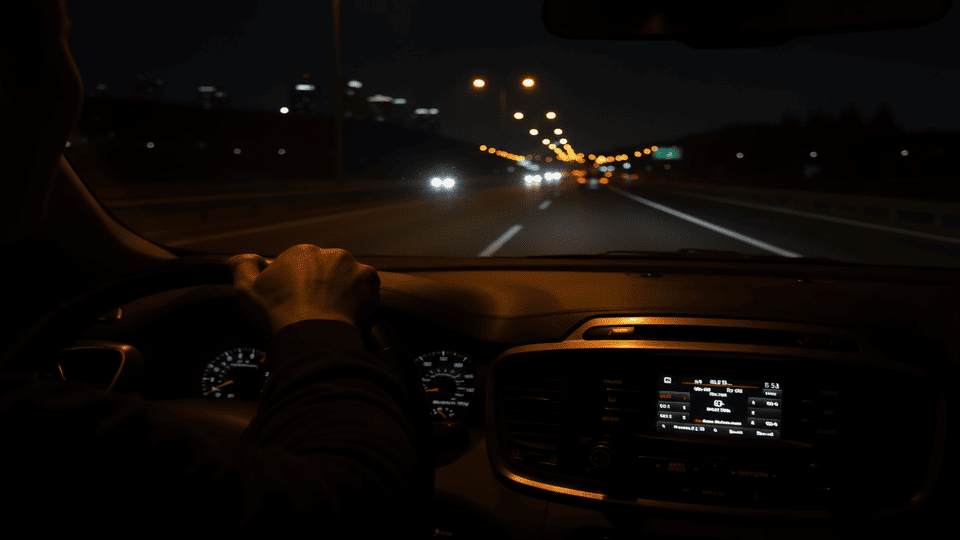
04/11/2025
We’ve all been there driving at night and struggling to see road signs clearly, or finding it difficult to adjust our eyes when moving from a bright space into a dim one. Occasional night-time blur can seem harmless, but when poor visibility after dark becomes frequent, it could be a sign of an underlying eye condition At Barraquer, our specialists often see patients who describe “difficulty seeing at night” or “glares from oncoming headlights.” With advanced diagnostic imaging and expert evaluation, we help uncover the cause and more importantly, protect your vision before it worsens.
What Is Night Vision and Why It Matters

Our eyes rely on specialized cells in the retina called rods to help us see in low light. These cells are highly sensitive to light and movement but can be affected by age, disease, or environmental stressors. When the retina or other parts of the visual system aren’t functioning optimally, it becomes harder to adapt to darkness, a condition known as nyctalopia, or night blindness.
Common Causes of Night Vision Problems
Night vision issues are not a disease themselves but a symptom of something deeper. At Barraquer, advanced diagnostic tools help pinpoint the cause.
-
Cataracts:
The most common cause in adults. As the lens becomes cloudy with age, it scatters light, leading to glare and halos especially at night. Barraquer’s advanced phacoemulsification systems and premium intraocular lenses (IOLs) restore clarity and contrast sensitivity after cataract surgery. -
Vitamin A Deficiency:
Vitamin A helps produce rhodopsin, a pigment necessary for seeing in dim light. Deficiency can reduce the retina’s ability to adjust to darkness. -
Refractive Errors:
Uncorrected myopia (nearsightedness) can make night vision blurrier. A detailed wavefront analysis at Barraquer ensures precise correction for crisp, clear vision. -
Corneal Diseases:
Conditions like keratoconus or corneal scarring can distort light, causing glare and starbursts around lights at night. Barraquer’s corneal topography and tomography systems provide detailed 3D mapping to detect even subtle irregularities. -
Retinal Disorders:
Diseases such as retinitis pigmentosa, macular degeneration, or diabetic retinopathy can impair the retina’s light-sensing cells. Barraquer’s Optical Coherence Tomography (OCT) and fundus imaging detect retinal changes long before symptoms progress. -
Glaucoma and Optic Nerve Damage:
In advanced stages, glaucoma can narrow peripheral vision, making it harder to see in low-light environments.
When to See a Doctor
If you notice any of these signs, it’s time for an eye exam:
-
You struggle to see while driving at night.
-
Lights cause glare, halos, or streaks.
-
You need extra time to adjust from light to dark environments.
-
You experience frequent headaches or blurred vision in dim settings.
Night vision problems can develop gradually which is why routine checkups are key. Early diagnosis can prevent long-term complications and preserve visual clarity.
How Barraquer Diagnoses Night Vision Issues
Barraquer’s comprehensive diagnostic suite is designed to evaluate every layer of your eye:
-
OCT (Optical Coherence Tomography): Scans retinal layers to detect subtle structural changes.
-
Corneal Topography: Maps the corneal shape and detects irregularities.
-
Contrast Sensitivity Testing: Measures how well you see differences between light and dark.
-
Visual Field Analysis: Checks for blind spots or peripheral vision loss.
-
Retinal Photography: Captures detailed images for monitoring long-term retinal health.
These technologies allow Barraquer’s ophthalmologists to tailor a precise treatment plan whether that means adjusting prescriptions, recommending supplements, performing surgery, or managing disease progression.
How to Protect Your Night Vision
While some causes are medical, there are everyday habits that support eye health and low-light performance:
-
Eat foods rich in vitamin A, lutein, and omega-3s (like carrots, spinach, and salmon).
-
Keep eyeglass or contact prescriptions up to date.
-
Use anti-reflective lenses if you drive at night.
-
Limit exposure to bright screens before bed to reduce light adaptation strain.
-
Get routine comprehensive eye exams especially after 40.
Conclusion
Night vision problems are more than just an inconvenience. They can be an early sign of eye disease. The good news? With today’s diagnostic technology, detecting the cause is faster and more precise than ever. At Barraquer, we combine clinical expertise with advanced imaging tools to uncover the root of night vision issues and protect what matters most to your sight.
If you’ve noticed that the world seems dimmer after dark, don’t wait for it to get worse, book a comprehensive eye exam with Barraquer and see the difference clear vision can make, day or night.
Schedule a consultation today
For consultation, please contact us:
- Email: appointments@barraquer.ae
- Phone (Outside the UAE): +971 4 573 9999
- Toll-Free (Within the UAE): 800 234823 (BEHUAE)
- Availability: 7 days a week, from 8:30 AM to 6:00 PM
Extended hours on Monday until 8:00 PM
Our team will be pleased to assist you.